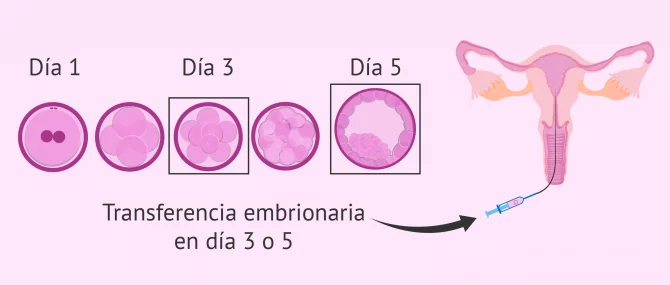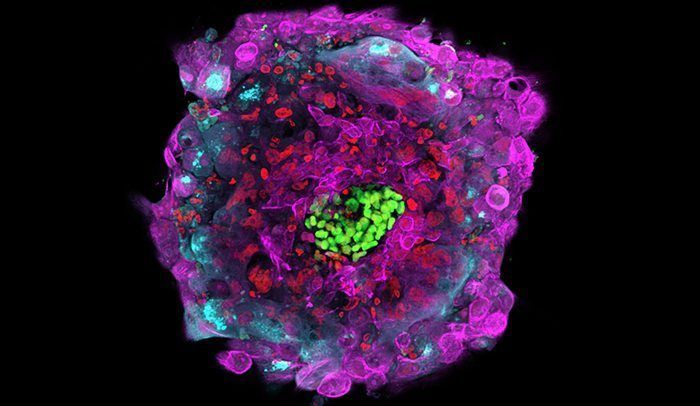The Marvel of el blastocisto gif Within the Uterine Wall
Table of Contents
ToggleThe human reproductive process is one of the most intricate and fascinating phenomena. Among its crucial stages is the implantation of the blastocyst into the uterine wall. This step is foundational to the successful establishment of pregnancy, with profound impacts on fertility, the health of the pregnancy, and reproductive challenges. In this in-depth article, we explore the detailed process of how the blastocyst implants itself in the uterine wall, explaining each stage and its significance in a comprehensive manner.
Defining the Blastocyst
Before delving into the stages of implantation, it is essential to first understand what a blastocyst is. The blastocyst represents a key phase of early embryonic development, generally occurring around five to six days after fertilization. At this point, the embryo is a cluster of 70-100 cells, divided into two critical parts: the inner cell mass, which will eventually develop into the fetus, and the trophoblast, which will go on to form the placenta.
Essential Points to Note:
- The blastocyst typically forms about five to six days following fertilization.
- It is comprised of the inner cell mass (which will become the fetus) and the trophoblast (which will form the placenta).
- The size of the blastocyst is extremely small, measuring just about 0.1 to 0.2 millimeters in diameter, only observable under a microscope.
Why Blastocyst Implantation is Crucial
The process of implantation is a critical milestone in pregnancy. It represents the moment when the blastocyst attaches to the mother’s uterine lining, establishing a life-sustaining connection. If implantation does not occur, pregnancy cannot continue, even if fertilization has successfully taken place.
Key Highlights:
- Implantation is vital for the progression of pregnancy.
- It begins a communication pathway between the embryo and the maternal body.
- The implantation process stimulates the release of pregnancy hormones, such as hCG, which are essential for maintaining the pregnancy.
Preparing the Uterine Wall for Implantation
The uterine wall, particularly the endometrium, must be in an ideal state to facilitate implantation. Several factors, including the thickness of the lining, blood flow, and hormonal balance, all contribute to making the uterus a receptive environment for the blastocyst.
Important Considerations:
- During the menstrual cycle, the endometrium thickens to prepare for potential implantation.
- Hormones such as estrogen and progesterone regulate the uterine lining’s receptivity.
- A properly prepared uterine environment is essential for the successful implantation of the blastocyst.
The Step-by-Step Process of Implantation
The implantation process occurs in a series of precisely coordinated steps. Each of these stages is vital to ensure the blastocyst successfully attaches to the uterine wall and begins its development.
The Journey to the Uterus
Once fertilization occurs in the fallopian tube, the blastocyst embarks on a journey toward the uterus, typically lasting between five to seven days. By the time it reaches the uterine cavity, the blastocyst is ready for implantation.
Apposition: The Initial Contact
During this first stage, the blastocyst loosely attaches itself to the uterine lining. It searches for the optimal location to begin the implantation process.
Adhesion: Firmly Anchoring to the Uterine Lining
Once the blastocyst identifies the best spot, it firmly attaches to the uterine lining. This process is made possible by the trophoblast cells, which are responsible for securing the blastocyst’s position by closely interacting with the endometrial cells.
Invasion: Embedding Deeply in the Uterine Lining
The final step in the implantation process involves the trophoblast cells penetrating the uterine lining, embedding the blastocyst deep within the endometrium to secure its development.
Noteworthy Points:
- The entire journey from fertilization to implantation generally takes about a week.
- Implantation involves the stages of apposition, adhesion, and invasion.
- Trophoblast cells are critical in securing the blastocyst within the uterine wall.
Hormonal Influence on Implantation
Hormones play a central role in regulating the implantation process. Estrogen and progesterone are the two primary hormones involved in preparing the endometrium and supporting early pregnancy stages.
Key Takeaways:
- Estrogen helps thicken the uterine lining and increases blood flow, creating a nurturing environment for the blastocyst.
- Progesterone stabilizes the endometrial lining and promotes the secretion of nutrients needed for the blastocyst’s development.
- The balance between these hormones is essential for a successful implantation.
Factors That Influence Implantation Success
Various physiological and environmental factors can affect the success of the implantation process. Understanding these elements is crucial for optimizing reproductive health and increasing the chances of a successful pregnancy.
Uterine Health
Conditions such as endometriosis, fibroids, or a thin endometrial lining can interfere with successful implantation.
Hormonal Imbalances
Irregularities in estrogen or progesterone levels can create an unfavorable environment for implantation.
Lifestyle Choices
Habits like smoking, excessive alcohol consumption, and poor nutrition can harm the uterine environment, reducing the chances of successful implantation.
Age
Advanced maternal age is associated with lower egg quality and changes in the uterine environment, both of which can impact implantation success.
Important Insights:
- A healthy uterine environment is key to successful implantation.
- Proper hormonal balance ensures the endometrium remains receptive.
- Lifestyle choices and age can significantly affect the outcome of implantation.
Challenges Arising from Implantation Failure
Implantation failure is, unfortunately, not uncommon and can result in early pregnancy loss or other complications. Understanding the causes of implantation failure is crucial for addressing fertility challenges.
Early Pregnancy Loss
Many early miscarriages are caused by failed implantation, often due to chromosomal abnormalities in the embryo or issues with the uterine lining.
Infertility
Recurrent implantation failure can contribute to infertility, requiring medical interventions such as hormone therapy or assisted reproductive technologies.
Ectopic Pregnancy
In rare instances, the blastocyst may implant outside the uterus, typically in the fallopian tube. This serious condition, known as ectopic pregnancy, requires immediate medical treatment.
Key Points to Remember:
- Implantation failure is a leading cause of early pregnancy loss.
- Repeated implantation failure can result in infertility issues.
- Ectopic pregnancy is a severe complication of improper implantation.
How Assisted Reproductive Technologies (ART) Address Implantation Issues
Thanks to advancements in medical science, couples experiencing implantation difficulties now have access to solutions. Assisted reproductive technologies (ART), such as in vitro fertilization (IVF) and embryo transfer, offer new hope for overcoming these challenges.
In Vitro Fertilization (IVF)
IVF involves fertilizing an egg outside the body and transferring the resulting blastocyst into the uterus. This method allows for better control over the timing of implantation.
Embryo Transfer
Timing the embryo transfer accurately maximizes the likelihood of successful implantation by ensuring the uterine environment is optimally prepared.
Preimplantation Genetic Testing (PGT)
PGT allows for the screening of embryos for genetic abnormalities, which improves the chances of a healthy pregnancy.
Key Highlights:
- ART has revolutionized the treatment of implantation-related fertility issues.
- IVF and embryo transfer provide better control over the timing of implantation.
- PGT increases the likelihood of successful implantation by ensuring the transfer of healthy embryos.
Nutrition and Lifestyle Choices to Support Implantation
Leading a healthy lifestyle and making smart nutritional choices are essential for creating an environment conducive to successful implantation. By nourishing the body, the chances of a positive implantation outcome are improved.
Nutrition
A balanced diet that includes whole foods, lean proteins, and healthy fats supports uterine health and overall reproductive well-being.
Folic Acid
Folic acid plays a crucial role in early pregnancy, aiding in cell division and DNA synthesis.
Exercise
Moderate physical activity improves blood flow to the uterus but should be kept in check. Excessive exercise may disrupt hormonal balance.
Stress Management
Incorporating stress-reducing practices, such as yoga and meditation, can boost reproductive health and support implantation success.
Important Takeaways:
- Proper nutrition is essential for maintaining a healthy uterine environment.
- Folic acid is vital for supporting early pregnancy development.
- Regular, moderate exercise and stress management techniques positively impact reproductive health.
Conclusion: Recognizing the Wonder of Implantation
The implantation of the blastocyst into the uterine wall is a miraculous and essential step in the beginning of life. It is a complex process that demands precise hormonal regulation, a receptive uterine lining, and a healthy blastocyst. By understanding this remarkable process, we gain a deeper appreciation for the intricacies of reproduction and the importance of maintaining optimal reproductive health.



